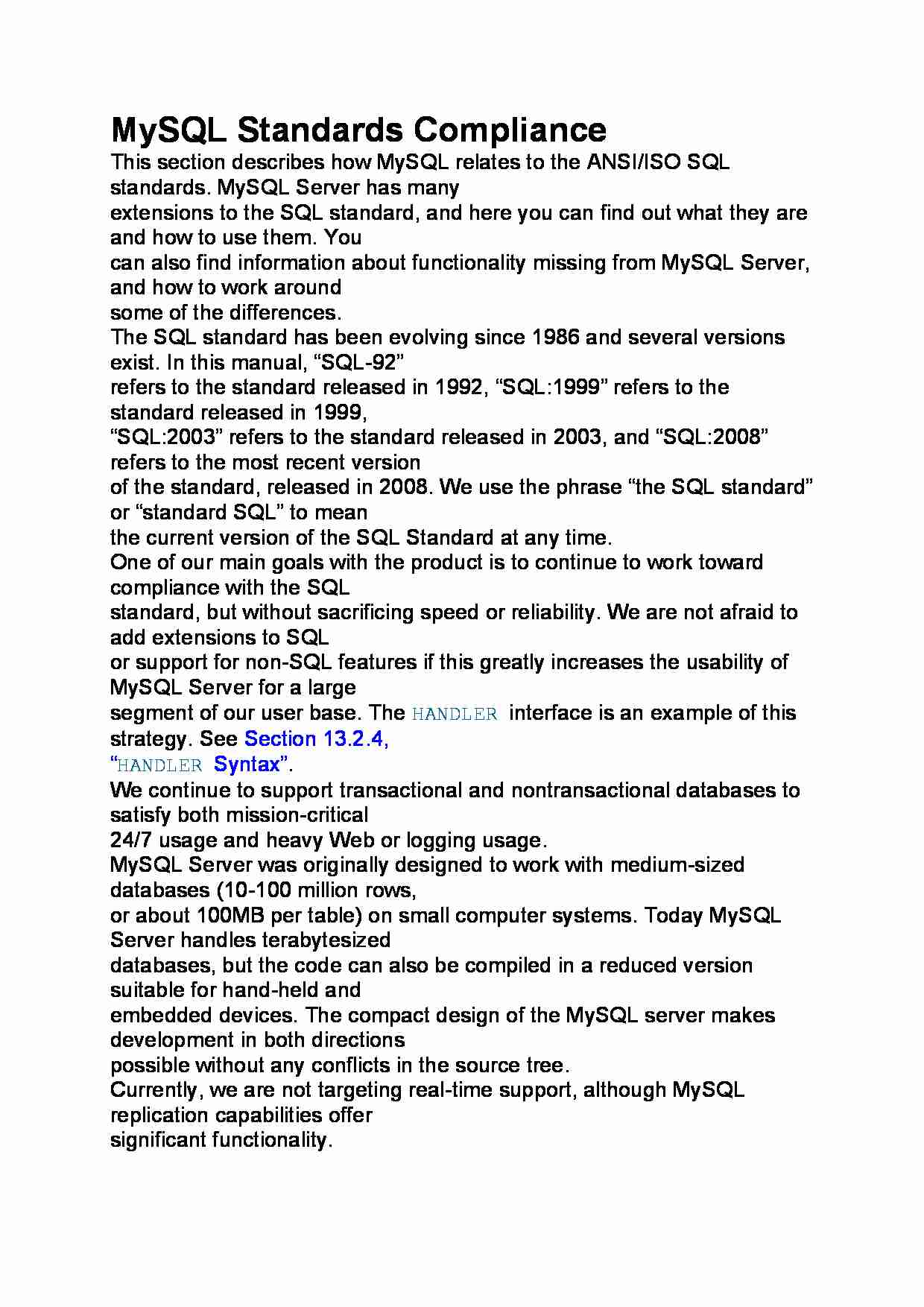To tylko jedna z 2 stron tej notatki. Zaloguj się aby zobaczyć ten dokument.
Zobacz
całą notatkę


MySQL Standards Compliance
This section describes how MySQL relates to the ANSI/ISO SQL standards. MySQL Server has many
extensions to the SQL standard, and here you can find out what they are and how to use them. You
can also find information about functionality missing from MySQL Server, and how to work around
some of the differences.
The SQL standard has been evolving since 1986 and several versions exist. In this manual, “SQL-92”
refers to the standard released in 1992, “SQL:1999” refers to the standard released in 1999,
“SQL:2003” refers to the standard released in 2003, and “SQL:2008” refers to the most recent version
of the standard, released in 2008. We use the phrase “the SQL standard” or “standard SQL” to mean
the current version of the SQL Standard at any time.
One of our main goals with the product is to continue to work toward compliance with the SQL
standard, but without sacrificing speed or reliability. We are not afraid to add extensions to SQL
or support for non-SQL features if this greatly increases the usability of MySQL Server for a large
segment of our user base. The HANDLER interface is an example of this strategy. See Section 13.2.4,
“HANDLER Syntax”.
We continue to support transactional and nontransactional databases to satisfy both mission-critical
24/7 usage and heavy Web or logging usage.
MySQL Server was originally designed to work with medium-sized databases (10-100 million rows,
or about 100MB per table) on small computer systems. Today MySQL Server handles terabytesized
databases, but the code can also be compiled in a reduced version suitable for hand-held and
embedded devices. The compact design of the MySQL server makes development in both directions
possible without any conflicts in the source tree.
Currently, we are not targeting real-time support, although MySQL replication capabilities offer
significant functionality.
MySQL supports high-availability database clustering using the NDBCLUSTER storage engine. See
Chapter 17, MySQL Cluster NDB 7.3.
We implement XML functionality which supports most of the W3C XPath standard. See Section 12.11,
“XML Functions”.
... zobacz całą notatkę




Komentarze użytkowników (0)